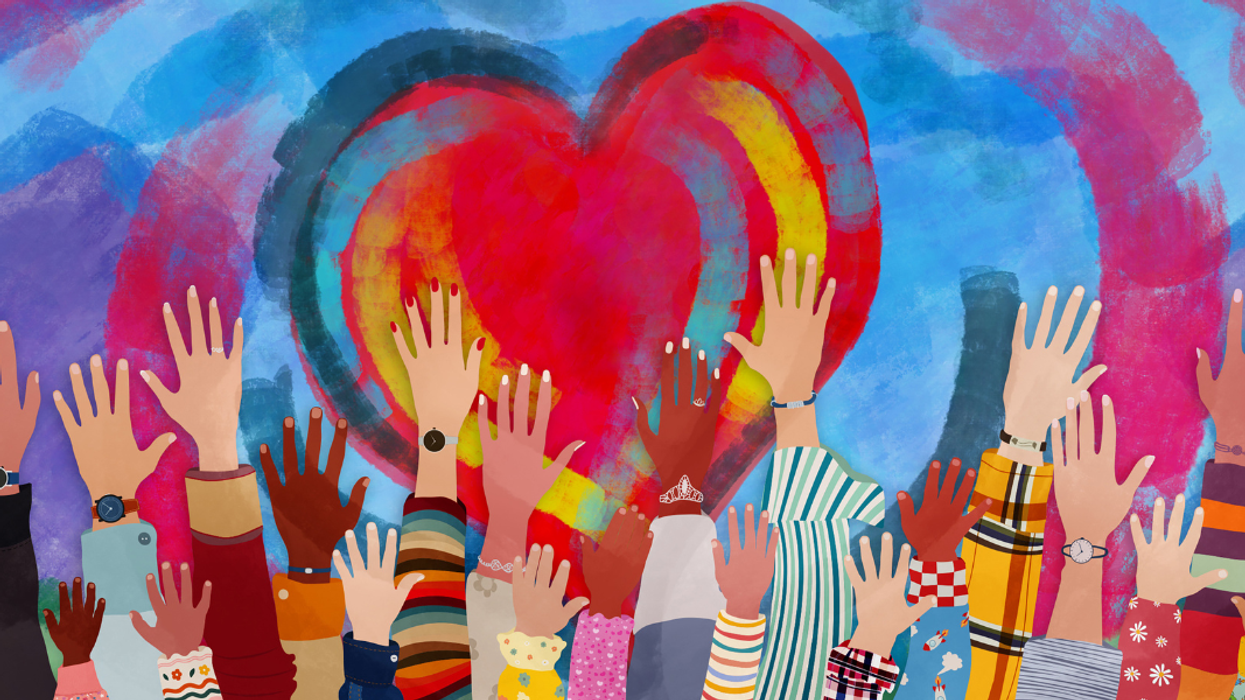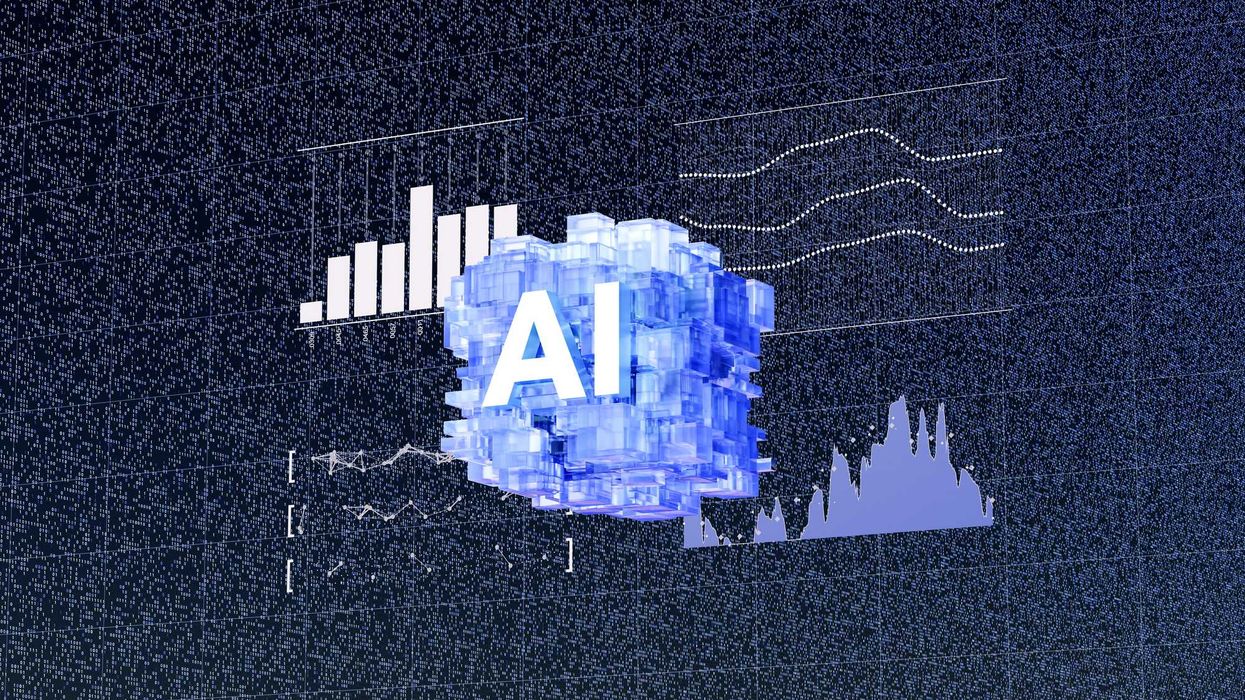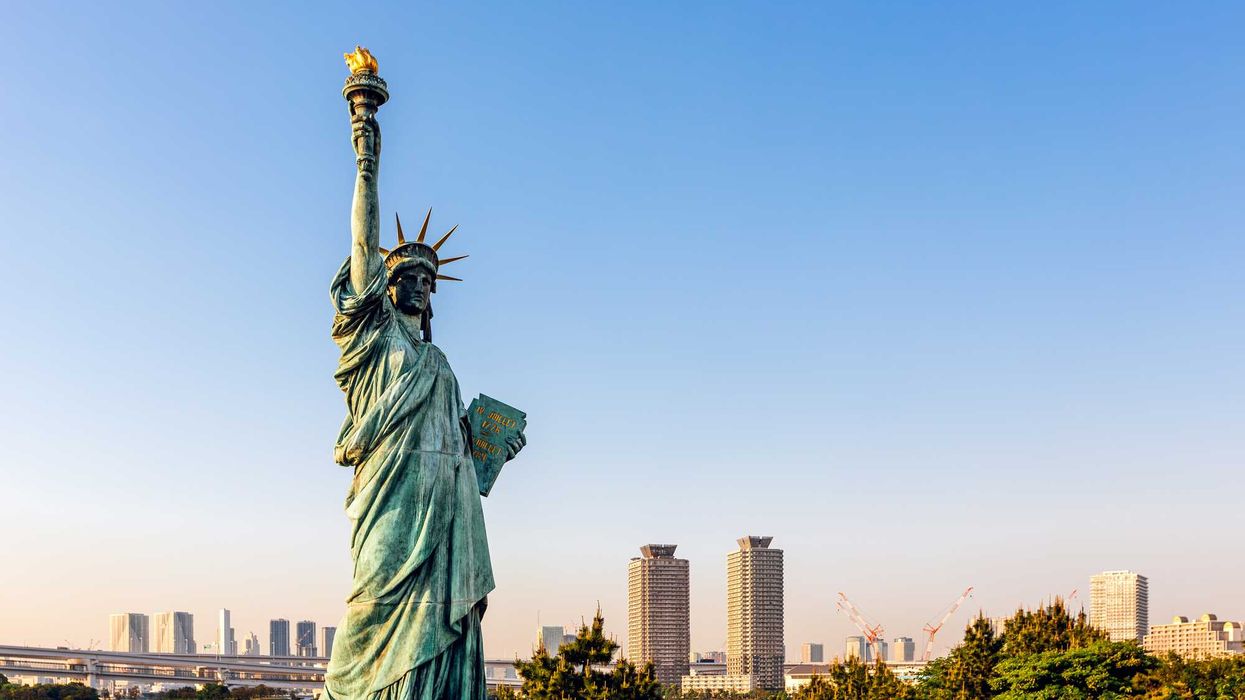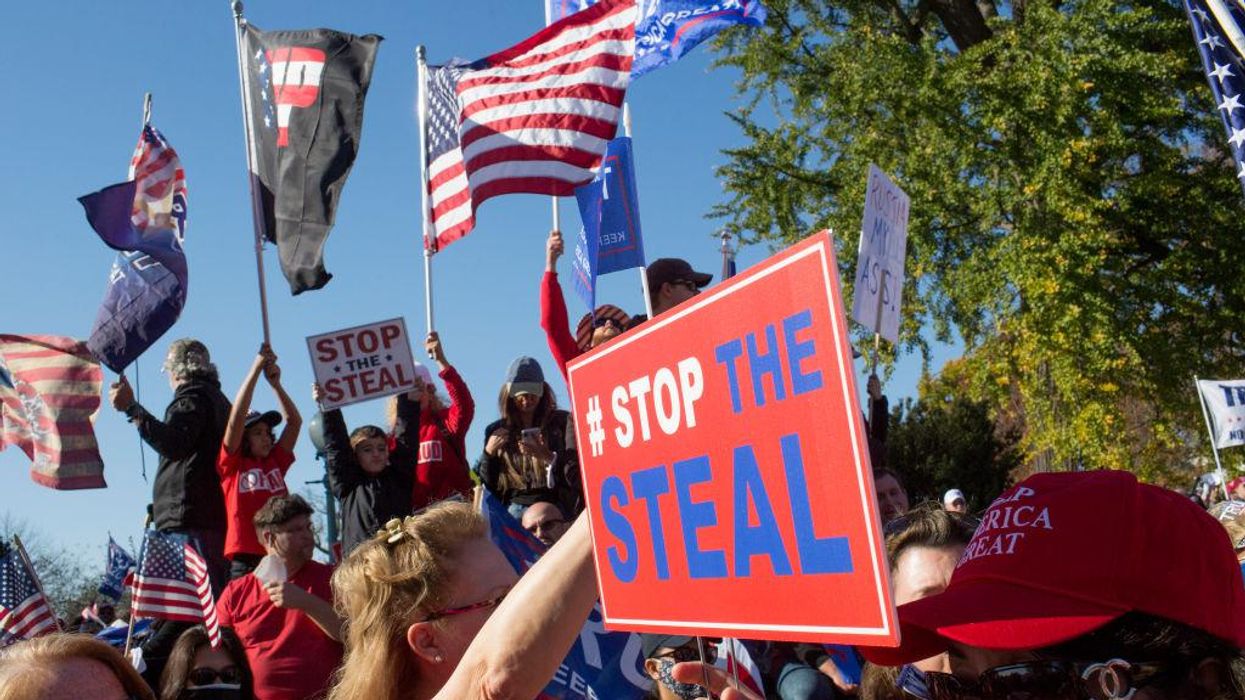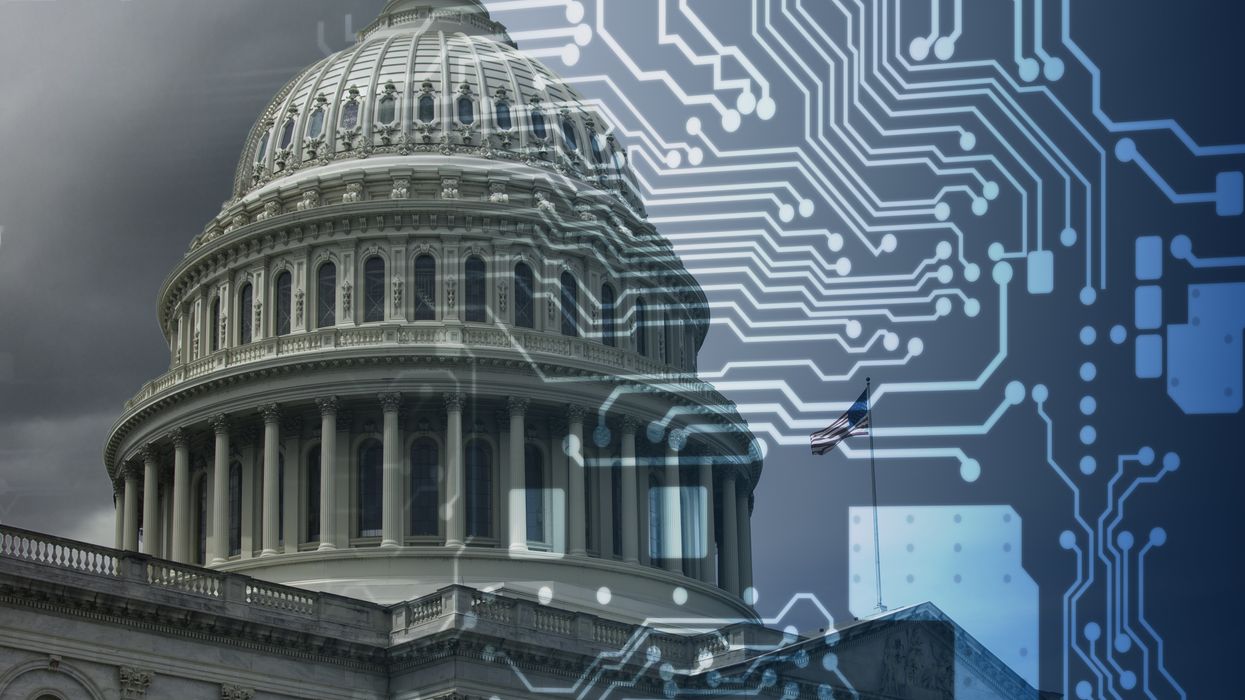Molineaux is co-publisher of The Fulcrum and president/CEO of the Bridge Alliance Education Fund.
In early September 2023, I attended a “ Gathering at the Intersection of Wellbeing and Social Change” which hosted 150 social change agents from North America. It was a regional summit, part of a global transformational voyage that strengthens our individual and collective wellbeing – and ripples out into the world. This is the first in a series of interviews that originated at the Wellbeing Summit.
Debilyn Molineaux (DM): We met at the Wellbeing Summit, co-hosted by The Omega Institute and Harlem Wellness Center. When I heard you speak, I heard the thoughtfulness you bring to movement building. And as a builder of the pro-democracy field or ecosystem or movement, you have knowledge that could be helpful! Let’s start with what is the Building Movement Project? And what movements have you supported?
Deepa Iyer (DI): Building Movement Project is an national nonprofit organization that has been around for 20 years. The mission is to catalyze social change by organizations, movements, individuals and networks. We do this with three strategies.
First, we conduct research on the nonprofit sector and what social movements need. This year we are doing a series of reports on movement infrastructure. What do organizations need to consider or tend to when facing ongoing outside threats? A previous report includes the needs of BIPOC+ led organizations, especially in terms of the pandemic and racial reckoning.
Second, we provide accessible tools and resources. We create a lot of different types of resources and guides to help nonprofit organizations and leaders with their own work. One example includes a tool we recently released called, “ How to write a solidarity statement.” It’s a simple and easy, reflection-based tool.
Our last strategy is fostering relationships. This has a lot to do with solidarity, which is one of those buzzwords, but also a strategy that requires deep and authentic relationship building. We often facilitate conversations between movements and their leaders around solidarity strategy or understanding the practices of solidarity and more.
DM: This word, solidarity, came into my awareness during the Polish strikes before the fall of the Soviet Union. I didn’t know what the word was or meant. Would you describe what solidarity means to you?
DI: There are a couple of different ways to understand solidarity. Many people think of it as a buzzword or a hashtag. When we talk about solidarity at the Building Movement Project, we really convey that it is a verb, it is a practice and an action. Solidarity is about how you show up. There is meaning and intention with how you show up.
I also want to emphasize that it’s a concept that has been around for generations. Solidarity is a way people took care of each other. When people may have felt isolated as an immigrant or didn’t have enough resources, people formed mutual aid groups and leaned on each other. This is also solidarity.
In a movement context, there are a couple of different practices that we can use to understand solidarity. One way is to center the needs and demands of the people most affected by the particular set of inequities. What does it mean for us to lift up, pass the mic, open doors, for the communities that are most affected, but are not in leadership positions or at the table?
Another practice is thinking about connections and commonalities between what seems to be disparate communities. We want to identify the threads that connect us. It may be what we want for the future, for our children. It may be shared systemic oppression, like migrants from different countries that may share the same challenges from bad immigration policy. At the same time we do that, we don’t need to engage in oppression olympics or flatten all experience as the same. Centering connections and commonalities are just two ways to use solidarity as a verb. So much of solidarity is about the intention, and asking oneself, “why am I here?” “how am I showing up?” and “what is my own privilege?”
DM: What led you to movement building?
DI: Much of what I’ve learned about movements and solidarity comes from my work after the horrible attacks of 9/11. I worked in South Asian, Arab and Sikh communities for about 15 years and learned the importance of finding commonalities and connections between communities. I learned that there are a variety of strategies to be used from advocacy to service provision to organizing. Learning how to build community at the grassroots level and also amongst and through networks. That work steeped me for the work I’m doing now. I was a frontline responder and I’m taking what I learned and putting it to use as a guide and a storyteller.
DM: One of the reasons movement building and solidarity is fascinating to me right now is my own work, which started as a trans-partisan or cross-partisan attempt to achieve better policy, and has now morphed into a pro-democracy field due to the authoritarian threats we see worldwide. What I am witnessing is that everyone seems to have their pet project of how to fix democracy, and then they cling to it, out of ego or other strong attachment that they seem unwilling or unable to work well with others. What have you seen, where too much ego or too much attachment have gotten in the way? And how do we move forward?
DI: It’s quite common in movement spaces to operate in silos. When we do this, we work in our lane, without awareness of the larger movement or ecosystem. And when that happens, egos and logos get ahead of what the actual values are. Other times we compete for resources without knowing it, or take credit when we shouldn’t. One way to alleviate or address these tendencies is to think of ourselves as part of a broader movement ecosystem. We can identify various roles that we are playing as organizations, within the larger democracy ecosystem. And the work we do, should be in service to the movement's shared values.
There is a framework I’ve developed called the social change ecosystem framework. It invites us to think about the roles our organizations can play in service to the pro-democracy movement, like the visionary or the storyteller or the disrupter roles. Once we identify those roles, how do we communicate with each other? How do we uplift each other? The visionary organization may have big plans drafted into a really brilliant new policy, but the storyteller organization needs to polish and share it with the public to gain support. Without those connections, we are unable to actually win or collaborate to win.
We need to make sure there are clear ways we communicate with each other across roles. And often that happens through the role of the “weaver” organization in the ecosystem, who pulls different organizations together. It helps to be really clear about what the shared values are, even if there is no consensus. A conversation about values can identify where there is consensus and areas where we are still figuring it out. These are practices that are helpful in movement building, and are fairly common.
DM: Thank you and I’d like to go a little deeper. What do you think is the role of pro-democracy efforts inside of other movements? Or is pro-democracy a movement in and of itself?
DI: Most social movements, especially progressive social movements are thinking about democracy as part of what they are trying to advance in the world. What I see more is that we have these movements that seem to be siloed. How is the democracy movement connecting to other movements like climate justice or immigrant rights? What are the pro-democracy values that could be embodied in those movements? That kind of weaving the throughlines could be really helpful to share similar language and vocabulary and provide mutual aid. It also helps share a similar story to the public to avoid competing narratives. To me the question is, are the throughlines between the movements there? And what kind of infrastructure does it take to create and nurture those throughlines?
DM: I believe we are in the “figuring it out space” on pro-democracy and other movements. One of the big questions we are facing is that because people who want social change tend to be more progressive, we find that democracy itself is being seen as a progressive cause. So the traditionalists are viewing the byproduct of democracy means they are going to lose to social change (in elections, in culture). How can we uphold democracy as a shared value in the United States?
DI: We need to address this head-on. There are some white people in this country who think the browning of America means a sense of scarcity, or polarization and more. We can’t get to democracy without including everyone. We have to address what people are feeling, where they are. Just beating the drum on democracy isn’t enough if they feel like there are not enough resources, or they have to compete with others or others are taking things away that belong to them. So it’s very important to address these challenges as part of this broader movement. Stating democracy as an American value isn’t sufficient to have people support democracy.
DM: You’ve given me and our readers a lot to think about. Thank you. We’re in the home stretch and it’s time for a fun question. What are you binge watching now?
DI: I’m not watching anything at the moment, but my favorite is Succession. I’ve binge watched it twice now. It’s so, so good. Brilliant.





